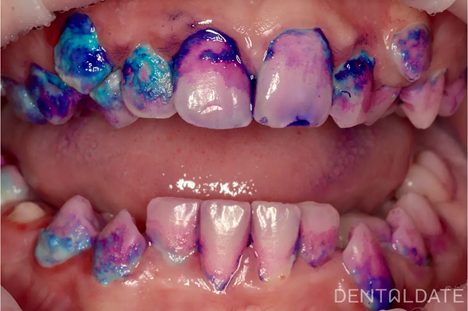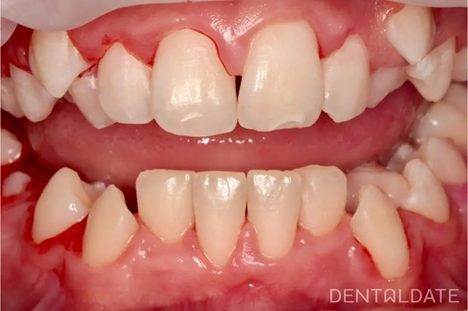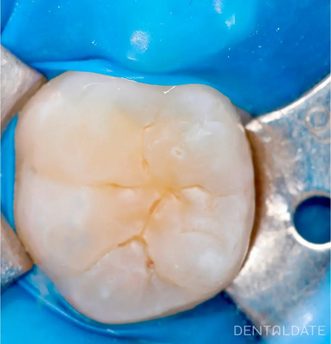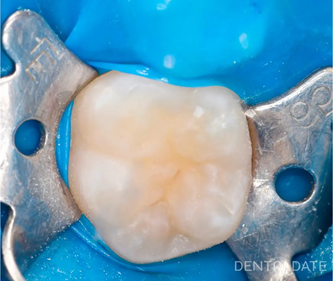Preventing cavities is the foundation of all pediatric dentistry. Dental health should be cared for even before the first complaints or visible damage appear. The primary goal of parents together with the dentist is to instill in the child the habit of brushing teeth daily and to develop a positive attitude toward dental visits. This approach significantly reduces the likelihood of carious lesions, complications, and diseases of the oral mucosa. One of the key tools for prevention is professional oral hygiene.
Why Professional Cleaning Is Important for Children
Parents often cannot notice early plaque or the initial stages of tooth decay. Children develop their own habits: they rush while brushing, pay attention only to the front teeth, and neglect the chewing surfaces. Even under adult supervision, microbial film and deposits gradually accumulate. The dentist’s office provides opportunities that are unavailable at home. Modern equipment makes it possible to completely remove hardened plaque, and magnification allows the dentist to detect the tiniest enamel defects. It is important to understand: without such a procedure, it is impossible to perform a full diagnosis and create a reliable treatment plan. In addition, after cleaning, the specialist teaches the child the correct brushing technique and explains the role of toothpaste and mouth rinses. All this helps the child take responsible care of their teeth.
When to Start Hygiene Procedures
The first visit to the dentist should be scheduled as soon as the primary teeth erupt. Full professional cleaning can be performed from the age of two, but the decision depends on the child’s readiness. The dentist’s task is to establish a trusting relationship and avoid causing fear of dental procedures. If the child reacts calmly, sits in the chair, and shows interest, the dentist performs a complete cleaning. If the child is anxious, an adaptive hygiene session is carried out: demonstrating the instruments, showing the “buzzing” brush, and letting the child choose a pleasant toothpaste. The procedure is done in a playful way, which helps the child get used to the new sensations and reduces anxiety.
How Often to Repeat the Procedure
The main goal of regular professional hygiene is to control plaque formation. The natural oral microflora is harmless, but poor hygiene allows microorganisms to multiply actively. This leads to the buildup of dense plaque, which causes cavities and inflammation. The frequency is determined individually and depends on the quality of home hygiene, the chosen oral care products, and the presence of harmful habits (such as frequent sweet snacks). To assess this, the dentist uses plaque indicators, photo documentation, and optical devices.
Indications for Professional Cleaning in Children
Professional hygiene is prescribed not only as a preventive measure but also in specific situations:
- visible soft or hard plaque that cannot be removed at home;
- presence of calculus, even in small amounts;
- signs of gum inflammation — redness, swelling, bleeding;
- preparation for orthodontic treatment;
- need for regular monitoring in children with a high risk of cavities.
When to Postpone Cleaning: Contraindications
Despite the safety of the procedure, there are situations when it is temporarily postponed:
- very thin or weakened enamel that may be damaged;
- pronounced enamel defects (erosion, hypoplasia);
- stomatitis or other inflammatory processes in the oral cavity;
- acute infectious diseases;
- individual intolerance to products used during hygiene.
How Professional Cleaning Is Performed
The technique depends on the child’s age and behavior. Most often, the modern GBT (Guided Biofilm Therapy) protocol is used, which includes:
- gentle removal of plaque,
- enamel strengthening with special products,
- selection of personalized home care products.
This method makes the procedure as comfortable and effective as possible.

Before the procedure, showing plaque with an indicator

After the procedure, result of professional cleaning
Additional Preventive Measures
After plaque removal, the dentist usually performs fluoride treatment — applying a special gel that strengthens the enamel and reduces the risk of cavities. The highest effectiveness is achieved right after cleaning, when the surface is most receptive to fluoride-containing products. An important preventive step is fissure sealing. These are narrow grooves on the chewing surfaces of the teeth that a toothbrush cannot reach. Plaque easily accumulates in them and becomes a source of cavities. Sealing is done in childhood, soon after the eruption of permanent teeth, if they are still healthy.

Condition before sealing

Condition after sealing
Best Age for Fissure Sealing
The most suitable time is during the transition from primary to permanent teeth. The first molars appear at the age of 5–7 years. Parents often mistake them for baby teeth because they do not replace old ones but erupt as new teeth. Their enamel is soft and vulnerable, making the risk of cavities particularly high. Sometimes sealing is also performed on primary teeth if their fissures are deep and prone to plaque accumulation. It is important to remember that sealing is a preventive, not a therapeutic measure, and it helps keep teeth healthy for many years.
How the Sealing Procedure Is Performed
First, the dentist conducts a thorough examination using magnification and, if necessary, takes an X-ray. Then the tooth is cleaned with a special powder and isolated from saliva using a rubber dam. A gel is applied to the enamel to dry the surface and make it rough for better adhesion. The sealant is then evenly distributed over the fissure and fixed. The procedure is painless and safe. Sealants last for many years without needing replacement, and the dentist simply monitors their condition during routine checkups.
Conclusion: Prevention Is Always More Effective Than Treatment
Regular dental visits and professional hygiene help keep a child’s teeth healthy. Such prevention not only reduces the risk of cavities but also helps establish proper oral care habits that will last a lifetime. We will create an individual prevention program and make the dental visit comfortable and beneficial.
Frequently Asked Questions about Professional Hygiene for Children
Is Professional Cleaning Painful for a Child?
No, the procedure is completely painless. Modern methods allow gentle cleaning, and children perceive the process calmly, especially when it is presented in a playful manner.
How Long Does Professional Hygiene Take?
On average, the procedure lasts up to 40 minutes, depending on the number of teeth and the child’s individual characteristics. If an adaptation visit is required, it may be divided into several short sessions.
Can Professional Cleaning Be Skipped If a Child Brushes Well at Home?
Home hygiene is very important, but even with perfect brushing, a toothbrush cannot fully remove all deposits, especially in hard-to-reach areas and fissures. Therefore, preventive dental visits remain necessary.
Does the Child Need Any Preparation for the Procedure?
No special preparation is needed. The main thing is to create a positive attitude, explaining that the dentist’s office offers a “game” with instruments and tasty toothpaste. This reduces anxiety and builds trust in the dentist.